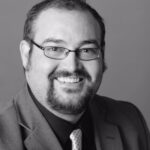
When Magic Happens – Finding the Right Fit
 By Micah Doramus, Principal, Sage International School of Boise
By Micah Doramus, Principal, Sage International School of Boise
Bluum is excited to introduce you to the dedicated leaders and high quality schools that we are working with to ensure Idaho’s children reach their fullest potential.
Springtime in Idaho is here: a little sunshine mixed with snow flurries, followed by rain and back to sunshine with a slight breeze. And that was just between morning recess and lunch. While many families, students, and teachers focus on Spring Break plans and strategies to wrap up the school year in the next couple months, school leaders are already looking forward to next year. Chief among the thoughts and questions that keep them up at night: how do I hire quality teachers that fit the mission and vision of our school? At Sage International School of Boise, we’ve taken an innovative approach to answering that question with our application workshop.
Prior to implementing our application workshop, the hiring process at Sage was fairly stereotypical. We invited team members onto hiring panels. We asked candidates questions to gain an understanding of their philosophy and practice. We called references. We hired some great teachers, and some not-so-great teachers. Or we hired some great teachers that didn’t believe in our core values, mission, and vision. It was this last group that really challenged our leadership team to think innovatively about how we vet candidates against who we are and what we do as a school. Hence the development of our application workshop.
We’ve discovered that in order to hire quality people that truly fit the mission and vision of our school, we needed to make sure we were a good fit for prospective staff as much as they would be a good fit for our school. The application workshop is a way for us to share about who we are, why we do what we do, and how we do it, in such a way that candidates can interview us while we interview them. Participation in the workshop is not mandatory, but we have found that the depth of discussion in subsequent interviews is of much higher quality with the candidates that attended the application workshop versus those that did not.
How It Works
- Identify the candidates—Once we know which positions we will be hiring for the next year, our leadership team reads through applications and resumes to determine the top three to five candidates for each position (no we don’t always have that many). Some years it has been only two or three positions for the entire K-12 continuum. Other years it has been as many as six or eight.
- Invite them to the workshop—Pick a date and time that is relatively convenient for your team, and invite your candidates to attend . ALL OF THEM! Every candidate you identified in your search for every position. They all come to the same workshop.
- Send them preparation materials—For us this includes our mission, vision, and core values, but also some anchor text articles that are important to how we approach assessment and collaboration. We let them know that these things will be discussed at the workshop and encourage them to come prepared with reflective thoughts and questions.
- Assemble your workshop team—At Sage, our team includes administrators and teacher leaders, but not every teacher that will work on a team with the hired employee. Team members (teachers) will be invited to the follow up individual interviews.
- Know what you’re looking for—We’ve built rubrics. We’ve built rating scales. We’re still tweaking the metrics, but we know the qualities and characteristics of an individual that will fit in our organization. It has as much to do with heart, passion, and the collaborative spirit as it does with content and pedagogy.
- Sit down and talk—Once your candidates arrive, do your thing. However you do it. For us, it’s important to introduce ourselves.. We spend time talking about what makes us unique. We share what we’re doing well. We share what challenges we still face. We ask the candidates to group up together and discuss the preparation materials while we observe from the outside. Then we break the candidates into smaller groups based on position or level, and keep talking. We answer their questions.
- Communicate next steps—We’re pretty clear that this is the first step in our interview process and that formal interviews will still follow. We try to give specific timelines as much as we can. We tell them we’ll be in touch individually as we move forward with our hiring process.
- Review the candidates—This is where we get down to business. The leadership team compares notes. We identify those we know we aren’t interested in taking further in the process. We discuss the ones that have already told us “Thanks, but no thanks.” We identify those that we know for sure we are planning to formally interview.
- And from there, the formal process begins.
We’re still learning, reflecting, and growing, but here are some lessons we’ve learned along the way:
- Start Early, Make a Schedule—You need to know the landscape as soon as possible in hiring. You need and want high quality candidates and you are in direct competition with every other district and charter out there. At Sage, we set tentative deadlines to help us know where we should be in the process. In order to plan our master schedule, we need to know allocated FTE. In order to plan allocated FTE, we need to know budget projections for the next fiscal year. The more in tune everyone in the organization is with their component, the more smoothly the discussions and decisions go. IF you don’t have a plan, someone else will beat you to the best candidates.
- Shift Happens—No matter how much you plan, things change. Don’t stress yourself out with playing the what-if game. When it comes to hiring and scheduling, one small move can cascade into three other areas. You will have teachers you didn’t know were going to leave spring it on you. You will have teachers leave because of unforeseen circumstances. Don’t worry yourself by catastrophizing the worst-case scenarios. Manage the decisions you have in front of you with the information you have. If you don’t have the right information, don’t make the decision. Wait. Hiring late is better than hiring wrong.
- Be Willing to Talk About Improvement—We do some great things. We’ve done some not-so-great things. We have things we need to change. And we’re learning to not shy away from them in marketing who we are. Idaho is a small place. Education is a small network. People talk. We believe if we own our story and tell it honestly, people will respect it.
- We’re Not for Everyone; And That’s Ok—We’re a school of choice. We can’t offer everything to everyone. Talking about improvement and bringing transparency to our challenges can be scary. Some people walk away. We’ve even had a candidate slip away in the middle of an application workshop without saying a word to anyone. We’ve had candidates tell us they would love to come work for us, but life circumstances don’t allow for it. We’ve had candidates tell us that we should be doing something different and they don’t believe in our model. At the end of the day…I’m ok with all of it. While education can be an intensely personal field, some things are just business. I will never fault candidates for making the best decision for their families. If we’re not a good fit, I wish them the best. But when we’re a good fit for candidates, and they’re a good fit for us. That is when the magic happens.
The views expressed by guest authors do not necessarily reflect those of Bluum.
___
Have something to say? Find us on Facebook and Twitter to share your comments!




